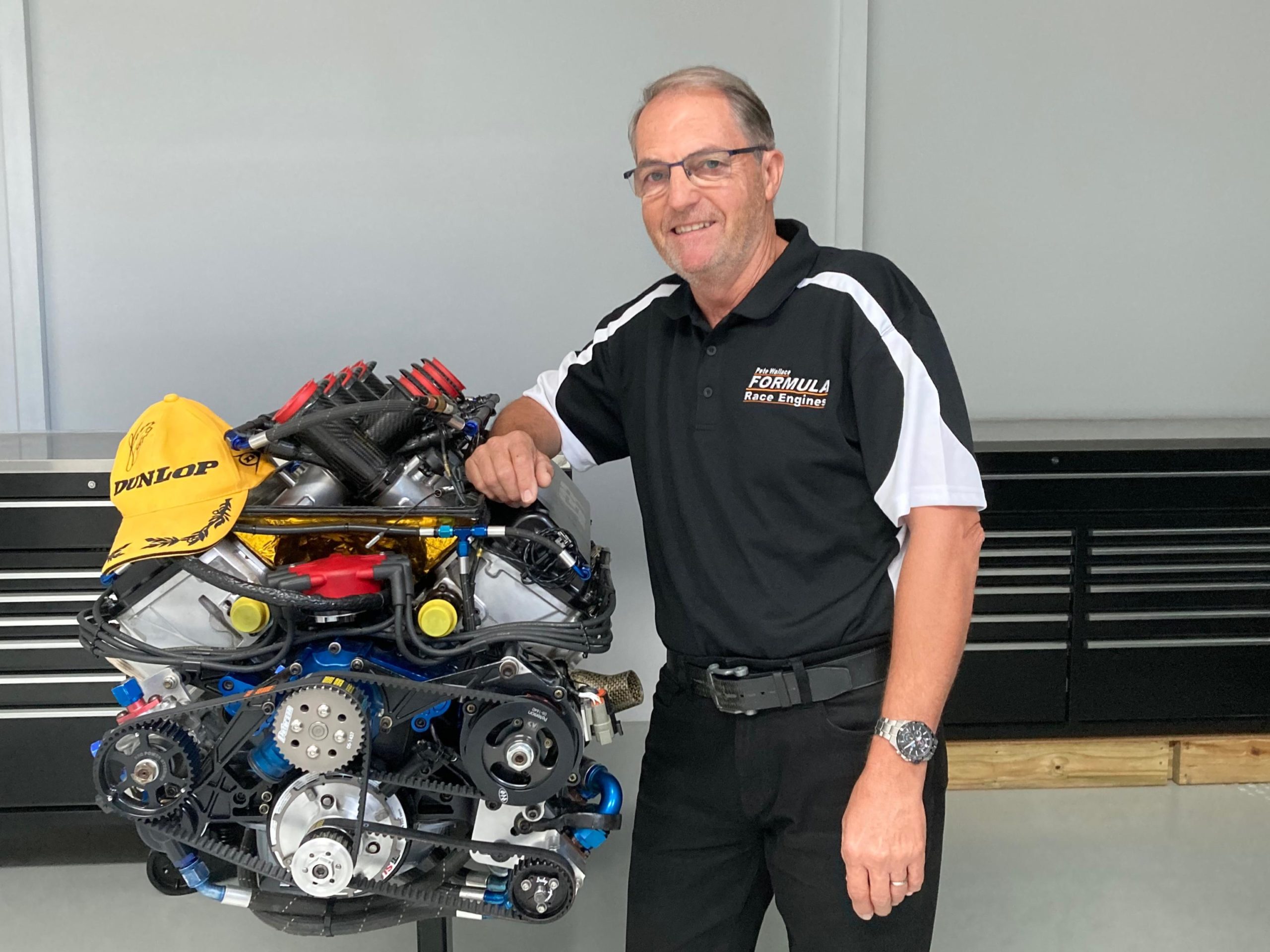
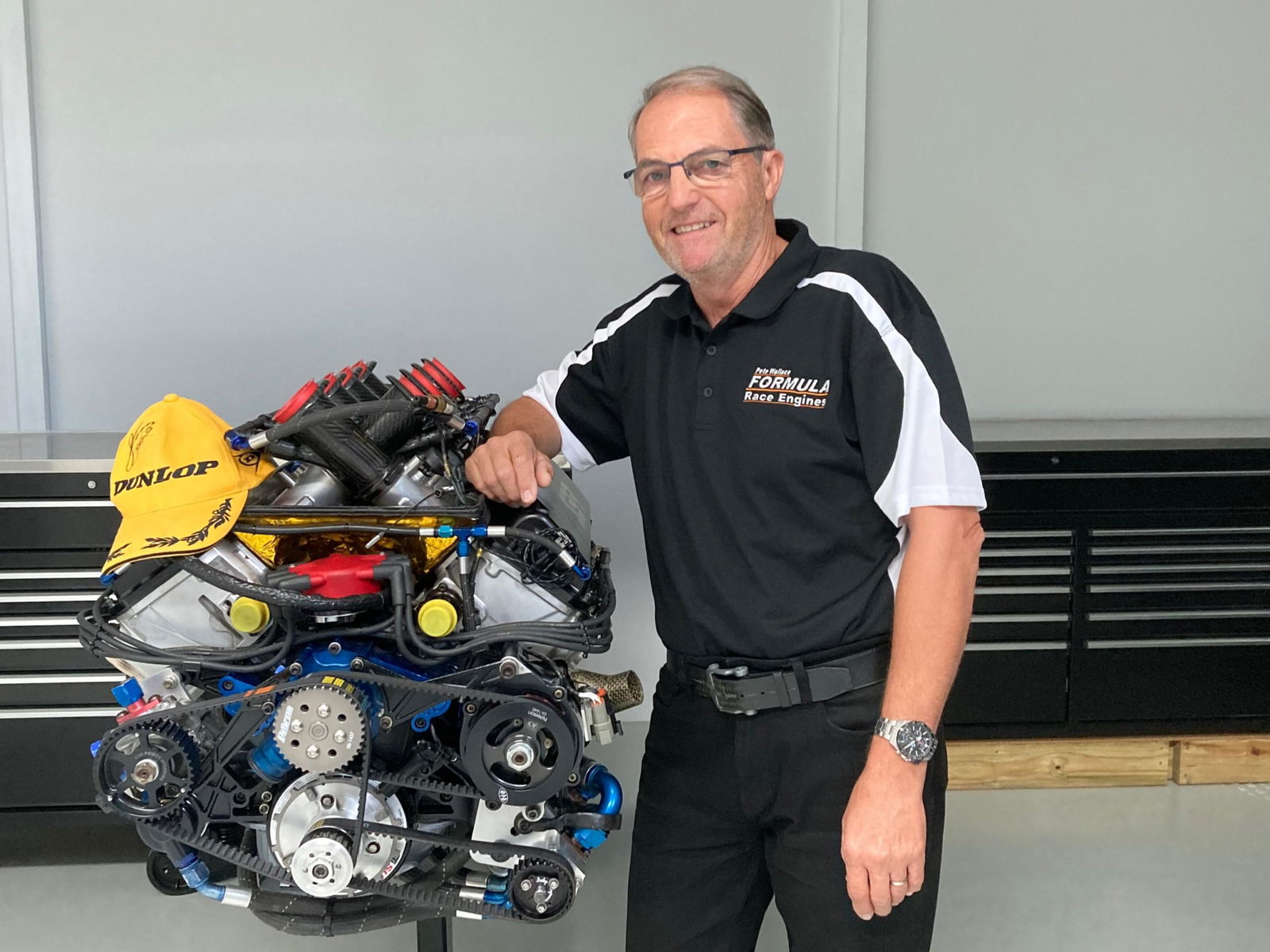
Pete Wallace is one of the army of people involved in the Australian motor racing industry who toil away behind the scenes keeping the sport alive.
He’s also the engine builder to the stars, having helped propel a number of the sport’s best known names to race wins and even title glory.
Originally a Sydneysider, after a brief spell working for Larry Perkins in Melbourne, he now runs his own show building engines on the Gold Coast.
It’s a small operation, just him and a newly constructed workshop, but one with a solid reputation built on nearly four decades of experience.
He prides himself on his attention to detail, a quality he attributes to be trained by good, knowledgeable people, humbly suggesting they were far better than he is.
Wallace’s path into motorsport was not straightforward and grew out of his efforts volunteering to spin spanners in Formula Ford.
His ‘career’ in motorsport started not far shy of his 30th birthday, but by then he’d had almost 10 years touring the paddocks of Australia.
“My father took me to Liverpool Speedway, Castlereagh Drags, Oran Park, and Amaroo Park, when I was eight years old, but the very first spark was, at 10 years old, I was taken to the James Hardie 500,” he told Speedcafe.com.
Wallace’s father was a carpenter, a handyman but not especially mechanically inclined, with a passion for cars.
His son inherited that passion, and by the time he was a teenager, the younger Wallace was pulling them apart and putting them back together.
“I repaired a gearbox, replaced the synchromesh in them, and that’s just with a Ford manual,” he recounts.
“No special tools, I just did it with whatever tools I had.”
In the coming years he started an apprenticeship courtesy of Paul Malhern, a relationship that opened the door into the world of motorsport.
It had been something of a pipedream to that point, Wallace having stood out front of Allan Moffat’s garage hoping someone would talk to him so he could steer the conversation towards potential employment.
While serving his apprenticeship, Malhern’s son was competing in Formula Ford. Wallace volunteered, helping out Formula Race Hire, and eventually Phoenix Motorsport.
At the time he was a general mechanic, turning his hand to whatever needed to be done as he learned the motorsport industry and gained experience at both club and national level.
“With seven years of that, I was able to write four letters, one to Gibson Motorsport, one to JPS, one to Larry Perkins, and one to Alan Moffat,” Wallace said.
Perkins and Moffat responded, both offering him a job. Gibson too wrote back, suggesting he gets back in touch at the end of the year.
With the choice of working for Moffat or Larry Perkins, Wallace was forced into a tough decision.
With Perkins building its cars locally, and Moffat importing the Mazda RX-7s he was campaigning at the time, he opted for the former.
“I chose to go to Larry Perkins because he built the cars and engines,” he reasoned.
His first job was dismantling 10 sets of cylinder heads in preparation for conversion to unleaded fuel; stripping them down and reassembling them before handing them back to Neil Byrnes, the engine builder.
A qualified mechanic, Wallace was 28 when he walked through Perkins’ door.
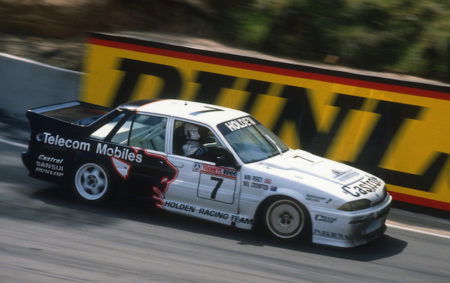
The move from Sydney to Melbourne was something of a culture shock, and came with a strong degree of social isolation.
Aside from work, his weekends were empty. He lived on the couch for a time, before finding a boarding house.
“I had nowhere to live,” Wallace admits.
“I was lucky that there was people there that were able to put me on the loungeroom room floor for a couple of months until I got somewhere, or till the end of that year actually.
“Then I got a proper place to stay, a boarding home to stay in the following year.”
In 1989, Wallace was assigned to the car driven by Win Percy and Neil Crompton at Bathurst, helping the pair to seventh.
But life in Melbourne was tough, and eventually he opted to move back to Sydney at the end of the season with the blessings of Perkins.
“There were some weekends, Barry, one of the guys at Perkins, we’d go fishing, but most of the time I’d be on my own.
“I was missing family a little bit, so I came back to Sydney.”
Courtesy of Perkins, he walked into a job working with Simon Kane in Formula Holden.
It was then, too, that he crossed paths with Dave Mawer, an instrumental figure in the Australian motorsport scene.
His workshop was something of a melting pot for the industry in New South Wales, with a laundry list of top-drawer engineers and mechanics having worked with him.
“He trained me to do the transaxle on Simon Kane’s Formula Holden,” Wallace said.
His path had also crossed Stephen Dewhurst, an engineer who would have a profound influence on his career.
They’d met before, at a ride day at Oran Park when Wallace had returned home from Perkins’ for Christmas one year.
“But it wasn’t until 1990 when I was starting to do Formula Holden with Simon Kane that I’d become more familiar with Stephen Dewhurst and Dave Mawer. We just clicked.”
Formula Holden was also a hotbed of young talent at the time; Mark Skaife was beginning his rise up the Australian motorsport ladder, while off track the likes of future Williams F1 technical director Sam Michael were also cutting their teeth.
In 1991, Wallace worked for Phoenix Motorsport on their Formula Ford engines, alongside preparing Formula Holdens.
Soon he was building Formula Ford engines for others, while his Formula Holden exploits saw him work with Mark Larkham.
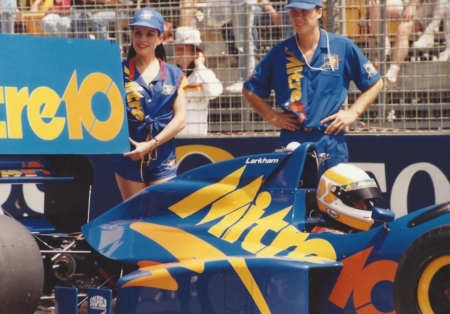
“After Phoenix Motorsport, I got involved in doing an engine for Mark Larkham on a Formula Holden because Steve Dewhurst was running the car then,” Wallace said.
“The following year, he asked me to run his Reynard 90D, so he asked me to build the engine.
“I had to design the billet sump and installation kit, and run the car for him.
“That’s when he had Sam Michael come and work with us on weekends.
“So we did two Reynards,” he added.
“I worked on the first one, put it all together, which was just nightmare of a car, it was a piece of junk when we got it.
“Installed the engine package, built the engines, built the transaxle, built the car, fixed all the wings, all the carbon fibre stuff.
“We came second to Skaife that year.
“Mark Larkham then purchased a Reynard 91D, which I installed the engine on, then Bruce Cary ran it with Sam Michael.”
Wallace continued with the team as it graduated into Supercars, Dewhurst having him build up the engines, gearboxes, and diffs.
Soon though, he was back in Formula Ford, parting ways with Larkham.
By now, Wallace had moved away from being a general mechanic and was beginning to specialise more on the engine building side of things.
In the mid-1990s that saw him tuning engines for almost every Super Tourer in the grid; Toyota, Peugeot, Honda, Nissan, and even the Ford Cosworth V6.
Despite never putting one on the dyno, he never had one fail. It’s a point Wallace is especially proud of.
His return to Supercars came courtesy of Jason Bargwanna, looking after the customer engines of Garry Rogers’ customer cars.
“That’s where I really started to do Supercar engines was then, and that’s because I was doing so many of the Super Tourers,” Wallace said
“Garry Rogers were doing Super Tourers as well, and that’s how I met Mike Excel [who was in charge of GRM’s engine shop], and he passed the customers on to me.”
For 2003 he found his way to Dick Johnson Racing, though had a spell at the end of 2002 in an effort to get the engine shop in order.
It had been a tough season for DJR on the engine front, suffering multiple engine issues during the season.
Wallace was the man charged with steadying the ship.
On his recommendation, the squad purchased the necessary components from the United States to remedy the problems, having the team engineer and manufacture any other components needed, or those with a propensity to break.
The failures that blighted the 2002 season were quickly consigned to the history book.
He hung around for the 2004 season too, before embarking on a new adventure with Oscar Fioronotto at Team Dynamik for 2005.
With only one car to run in 2006, Wallace had capacity to pick up his own private work, building the engines for Adam Macrow with which he won the Fujitsu Series that year.
Off the back of that performance, Stone Brothers came knocking at a time when the powerhouse team had just started to fall down the pecking order.
“I was joining a team that supposedly had good engines,” Wallace explained.
“They had some good components, just not assembled correctly, and the mapping wasn’t correct.”
SBR had been in a similar boat to that which DJR had found itself in a few years earlier.
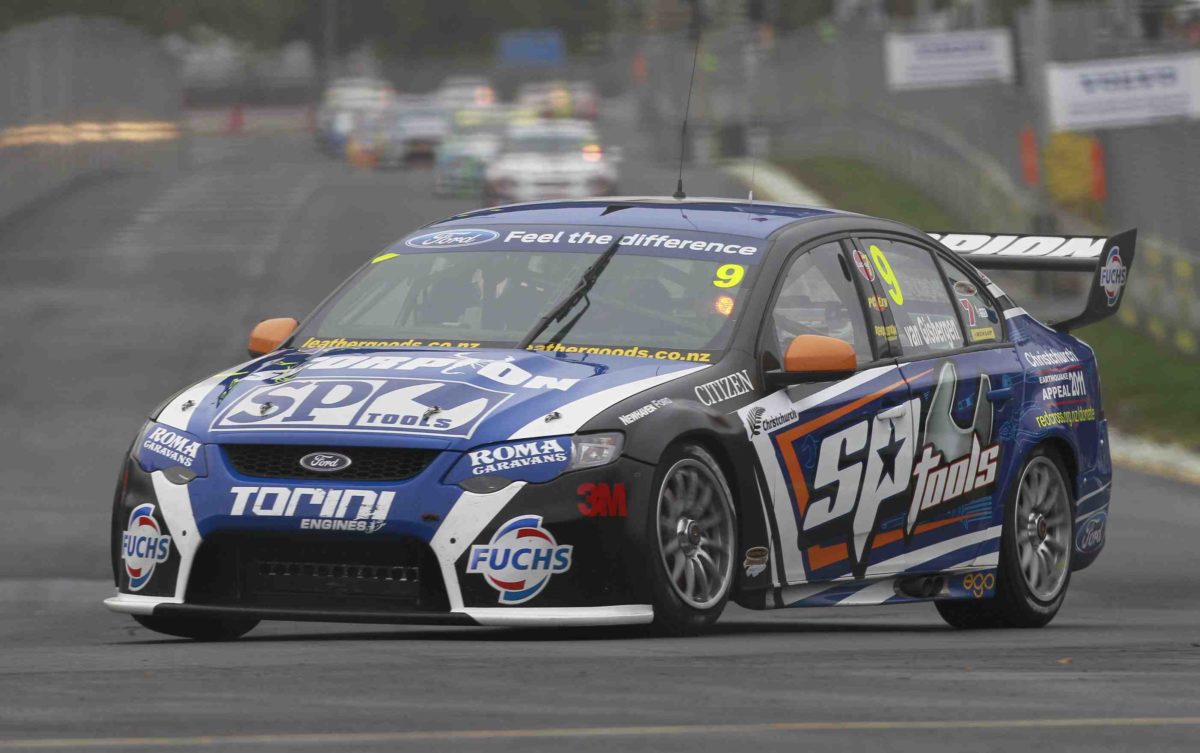
“Ken Douglas was a very, very, very good technical director,” he explained.
“He knew what they were having problems with, and he got it fixed by getting me employed.”
His first task was to rebuild James Courtney’s engines, promptly building and re-mapping SBR 014 – the unit which had finished second place in the 2007 Bathurst 1000.
The result was an increase in torque, which pleased Jimmy Stone.
He then rebuilt SBR 020, which had been raced to third at Bathurst in 2008, with its output overlay identical to 014.
“That’s how it should be if all the components are assembled the same way,” Wallace reasoned.
The second of those engines was the team’s spare at the opening event of the year in Adelaide.
“After Clipsal I remember standing at the front door with Jimmy and Les Laidlaw, Jimmy said to me he would get James’ engine sent back to me for a rebuild.”
Wallace refused, stating that he wouldn’t pull apart an engine after one race meeting, noting it should be capable of 1500-2000kms.
“His reply was ‘young fella if that engine fails you won’t have a job here’. I accepted that no problem,” Wallace recalled.
He did, however, put the engine back on the dyno, where it was revealed it had increased in horsepower owing to the rings having fully seated.
“By 2009, the small team of Craig Kirwood, Farell Khan and myself had refined the inlet, pistons and valve springs, valve seats, and exhaust system to the point that SBR engines were the most powerful, reliable, and fuel efficient engines in Supercars,” he said.
Between 2009 and 2012, Wallace rebuilt engines at 5000km intervals – there was no budget for anything else.
In the years since, he’s further refined the engines and they now produce more power than when they were racing in their hey-day.
It was Wallace who built the engine with which Shane van Gisbergen took his first V8 Supercars (as it was then known) race win in Hamilton, 2011.
He’d developed a new specification, with SVG the first man to try it out, and the podium hat from that success is now in Wallace’s possession.
Throughout, Wallace remained a racer, and maintained a desire not only to build engines but to be with the team at the track, on the front line.
A year later and it was Scott McLaughlin whom he helped to victory, this time to the Super2 Series title – using SBR 020.
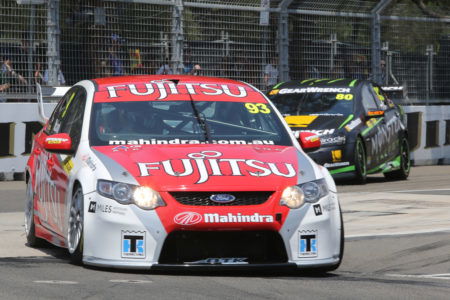
They’re fond memories for the veteran, especially cherished as he had a contribution to the early success of the men who are now stars of the sport – he even built engines for a young Mark Webber during his time in Formula Ford.
“That’s what I enjoyed very much, doing my job and then going to the racetrack and seeing it work, and fixing any small issues you might have,” he said.
“You shouldn’t have any issues, but every now and then you’ll have little issues, so you’re fixing at the track.”
His time with Stone Brothers came to an end shortly after its sale to Betty Klimenko, the Mercedes programme making his services superfluous.
However, to this day he has maintained a link with the Stones, for whom he still builds engines.
His horizons have broadened too. As we speak, Andrew Meidecke’s Sierra turbo was in his shop, having also worked on the Aston Martin Vantage V12 engines for the Meidecke-Stone hook up that ran in Australian GT.
These days, Wallace is in charge of his own destiny, running his own shop from the Gold Coast.
He’s just invested in a new facility, from which he prepares a swathe of Super2 and Super3 engines.
“I’m just basically semi-retired, doing whatever Super2 or 3 engine comes in, or Sierra turbo, or whatever somebody wants done, I do,” he said.
Even so, Wallace remains passionately committed to the high standards he has become known for.
He’s won races, and championships, in every category in which he’s competed; from Formula Ford and Formula Holden, to the Supercars ladder, with Porches and more.
It’s not been a journey he’s taken alone, and Wallace is quick to acknowledge the countless names who’ve helped him along the way, most notably Stephen Dewhurst.
While for the moment he’s working away from the limelight, who knows, perhaps it won’t be too long before he’s seen back in the main game pit lane.





















Discussion about this post